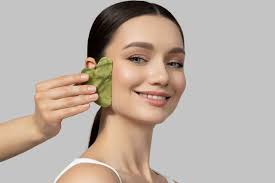
Facial Extractions
Facial Extractions – What To Put On Face After Acne Facial Extractions?
If you have blackheads, white heads, white bumps on the face, or milia, you don’t have to live with these bumps on the face. Facial extractions remove milia, blackheads and white heads but must be done properly by a well-trained aesthetician. Facial extractions are also called pore extractions, milia extractions, or blackhead extraction. These terms all mean removing debris from clogged pores.
Properly performed extractions improve skin clarity and smoothness. If the milia, white heads and blackheads are not extracted properly, acne cysts can occur. Removing these white bumps on the skin will make you feel much more confident, especially in photos. After facial extractions it is important to use the best skin care products for your skin type to try and prevent recurrence of the milia, blackheads and whiteheads.
How To Prevent Clogged Pores?
Using the right skin care products for your Baumann Skin Type and avoiding skin care products that cause comedones is the key to preventing clogged pores.
What Are Facial Extractions?
Clearing out pores manually is known as a facial extraction. Facial extractions should be performed by a skin care professional. Extractions are commonly provided during a facial treatment or an acne facial. Routine extraction facials are a beneficial investment for the health and appearance of your skin if you are prone to comedones and milia.
Why You Need A Blackhead Extraction Facial
When your pores are congested, you either see dark blackheads or white bumps or you can feel bumps under the surface of your skin. Clogged pores can stretch the pore skin out and result in large pores. Comedones are more common in oily skin types. Pores become clogged with excess sebum (oil) and dead skin cells – forming blackheads whiteheads known collectively as comedones. Blackheads, also called open comedones, are the visible, small black dots that are formed when your clogged pores are exposed to air and the dead skin cells get oxidized turning them dark. Blackheads are the most common reason for extraction because they make the skin look uneven and bumpy.
Comedone Removal at Home
You might be tempted to pop pimples or remove blackheads yourself- but resist the urge! Instead of getting rid of your breakout, home extractions can lead to pushing it deeper and making it worse. You risk damaging your pores which can lead to large pores, recurrent acne, acne cysts, redness, swelling, and even scars. Not using proper technique leads to the spread of bacteria, which can cause a skin infection or worsen acne.
Where To Go For Professional Facial Extractions?
First off – you’ll want to see a reputable licensed skin care specialist to perform the extractions. This will most often be an esthetician. Do a little research first, and see who is recommended for facial extractions near you. If in doubt, ask your dermatologist. Your face is delicate, scars are permanent and you want it put into the hands of someone you can trust.
What To Look For During Facial Extraction Treatment? The esthetician should clean your skin first using at least one cleanser. The facial extractions should be performed with sterile instruments. Ask if the instruments have been autoclaved or put in the antiseptic blue solution. Autoclaving is a better way to sterilize equipment. The aesthetician should wear gloves. These are signs that the aesthetician is a professional who is preparing properly and taking appropriate precautions. If you do not see these things- go somewhere else and do not let them perform facial extractions on your face.
Extraction Technique
The facial extraction technique your esthetician uses is very important because improper facial extractions can be detrimental to your skin. If improperly done, The pore wall may become damaged, spread bacteria, and cause more breakouts. This leads to inflammation and infection. A good esthetician is skilled at clearing clogged pores without spreading bacteria or damaging the walls of the pore.
Here are the general steps you can expect your esthetician to follow during facials extractions :
Your skin is thoroughly cleansed
Steam is applied to your face to keep it warm and moist. This helps to soften and loosen the plug of sebum and cells in your pores, making them easier to remove. Dry skin tightens back up and makes the process more difficult.
A moisturizer may be applied as well to help soften the area and make the extraction easier.
If some additional exfoliation is needed, pores are loosened with a skin scrubber.
Protective eyewear or pads are placed over your eyes, and a magnifying lamp is used to examine your skin. This allows the esthetician to easily see your pores and better assess which pores require deep cleaning.
Gentle pressure is applied around the pore to extract the contents. This can be done by a stainless-steel tool with a loop on the end, or with the fingers wrapped in cotton or gauze. This should not be forced. If they cannot remove the comedone with 2-3 firm pushes- it is too deep and they should leave it alone. In a few weeks it will be closer to the surface and they can try again.
If you have a lot of blackheads and blemishes – don’t expect them all to be removed in one session. Too much at once can be traumatizing to the skin, so your medical provider will advise you on a treatment plan.
Facial Extraction Aftercare
What to put on face after extractions? Skincare following extractions is important to prevent inflammation and spread of bacteria. After the extractions are complete, an antibacterial product will be used to prevent a post-extraction breakout. The esthetician will apply a soothing mask to help calm your skin and decrease redness.
Your skin may be irritated following extractions, go easy on it. Stick to soothing skincare products for a few days. A gentle, hydrating facial cleanser and a mild, fragrance free moisturizer will calm the skin for the first 24 hours after extractions.
If your face is a little more red than normal after facial extractions, you may be tempted to cover up with make-up. Try and avoid doing this for the first 12 hours, as your pores are more open than normal and susceptible to bacteria and clogging form the pigments in the makeup.
For the day or two following your facial, avoid any acid-based products or anything containing alcohol for at least 24 hours. Don’t exfoliate or use any potentially hard, irritating products – like retinols or salicylic acid.
Moving forward, if you do have oily skin, you’ll want to avoid products that can contribute to clogging pores – such as coconut oil. Look for products labeled ‘non-comedogenic’ — meaning the product is formulated with ingredients that don’t clog your pores. Always use the proper skin care for your Baumann Skin Type to prevent milia and comedones.
If you’re interested in finding a professional to perform your extractions – and also guide you in determining a customized skincare regimen, you can find a STS approved medical provider in your area here.


